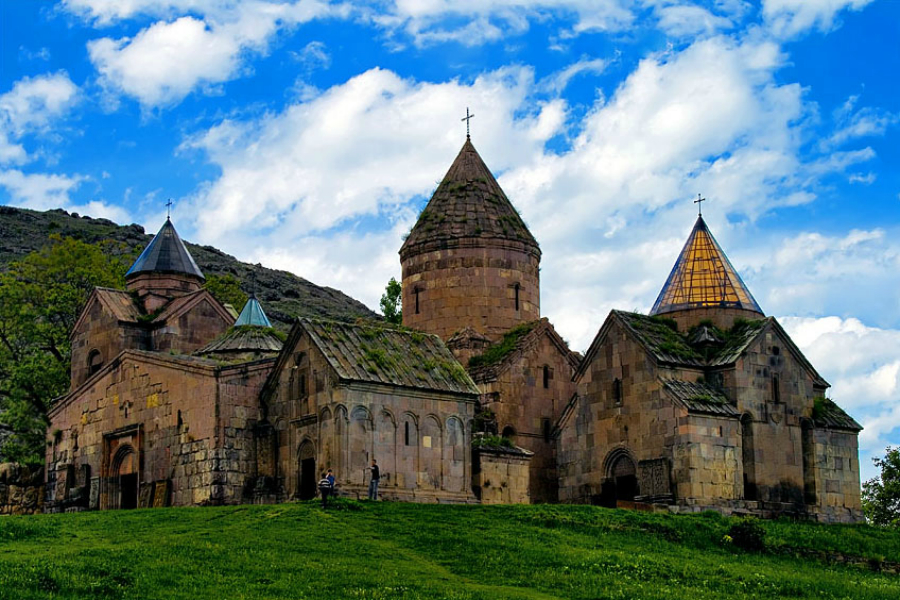
Nor Getik, also known as Goshavank, has a fascinating history as it was established in place of an older monastery called Getik, which was tragically destroyed by an earthquake in 1188. The credit for building the new monastery, later named Goshavank in honor of Mkhitar Gosh, goes to the renowned statesman, scientist, and writer. Mkhitar Gosh was not only the author of numerous fables, parables, and the first criminal code but also had a visionary idea of founding a school within Nor Getik. This school became an influential learning center, attracting scholars like Kirakos Gandzaketsi, a prominent Armenian scientist and historian.
The construction of the Church of St. Grigor Lusavorich in Nor Getik commenced in 1237 and was completed in 1241 by Prince Grigor-Tgha. Besides the church, the monastic complex included other essential structures such as a bell tower and a library, one of its largest libraries, housing invaluable knowledge and scriptures.
One of the most distinctive features of Nor Getik is its collection of khachkars, also known as “cross-stones.” These intricately carved khachkars add to the uniqueness of the complex, with some displaying exceptional artistry. Among them, the masterpieces created by the skilled sculptor Pavgos stand out, particularly the khachkar carved in 1291, which proudly bears the creator’s name in the bottom left star.
Today, Nor Getik stands as a testament to Armenia’s rich cultural and artistic heritage, drawing visitors worldwide to admire its architectural beauty and marvel at the incredible craftsmanship displayed in its khachkars.
